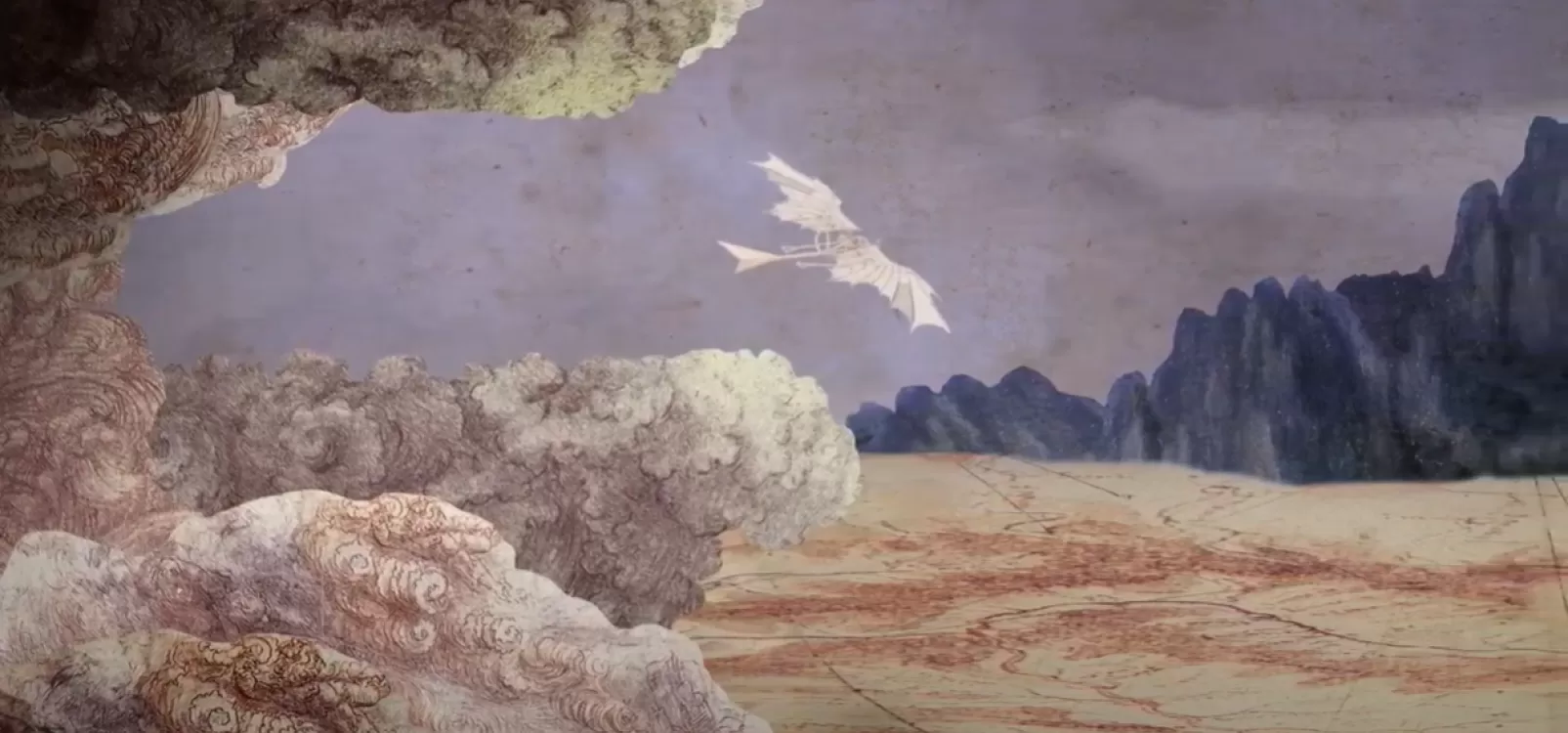- September 21, 2022
About Hagen’s “The Notebooks of Leonardo da Vinci”
 | Program Notes by composer Jocelyn Hagen
| Program Notes by composer Jocelyn Hagen
Rivers of ink have been dedicated to the study of the life and work of Leonardo da Vinci. His genius has been articulated by scholars, historians, artists, engineers, and scientists for centuries, and the legacy of his work will continue to endure the test of time because of his remarkable synthesis of art, science and design. When I first began researching da Vinci and his notebooks, I was overwhelmed. How was I to condense this huge body of work into one 35 minute symphony? (Over 5,000 pages of manuscript have been found.) There was no way I could include the entirety of this work, so my goal became serving the spirit of his work and his curious mind.
One of the biggest lessons I gleaned from studying his work was the importance of being willing to fail. He was a man known as much for his failures as his successes, and this did not dampen his creativity or his drive. More than anything he just wanted to understand the world around him, and he didn’t let his pride or ego stand in the way of posing the tough questions or trying to answer them. he remained open to the possibility of new discoveries and allowed himself the freedom to change his mind. You can see this this attribute of his personality beautifully in the opening of the symphony, when his handwriting is scrolling across the screen. He very quickly crosses out a word, pauses, then continues on with his idea. Mistakes and practice were a big part of his creative process, as they should be. And did you know he wrote right to left, backwards, as if in a mirror?

Knowledge became one of the greatest themes I focused on when crafting the libretto, and is the subject matter for three of the movements, which are sung a cappella. In the second movement, da Vinci stresses the importance of daily practice based on the pillars of knowledge. In the fourth movement, his words express the necessity of basing one’s judgments on facts rather than speculation. And in the penultimate movement, he warns the reader to be aware of personal bias, suggesting that the truth may be revealed if one is able to see things from a different point of view. His notebooks are full of musings just like these, along with keen observations, geometrical studies, and techniques for painting and drawing. But he also drew pictures of grotesque faces, cats, and a few dragons! This showed to me an often-overlooked but extremely beneficial component of the creative process: playfulness.

The third movement, “Ripples,” combines two ideas that I was very excited about exploring in this work. First, da Vinci’s fascination with water and his understanding that water is the carrier and matrix of life, and second, the music of Italian music theorist and composer Franchino Gaffurio. Gaffurio and da Vinci both lived in Milan, and according to The New Grove Dictionary of Music and Musicians, were actually friends. I wove musical phrases from the “Gloria” and “Kyrie” of Gaffurio’s Missa di Carneval into the fabric of the string parts.
Leonardo da Vinci did not invent the Vitruvian man, but it is without doubt the most recognizable image from all his notebook pages. Vitruvius, the architect, described the human figure as being the principal source of proportion among the classical orders of architecture. Da Vinci was one of several artists who examined this theory by sketching a “Vitruvian man.” The infamous image demonstrates the blend of mathematics and art as well as da Vinci’s deep understanding of proportion. In the fifth movement you will hear the choir sing the different ideal proportions of the human body and see an overlay of his incredibly detailed (and accurate!) sketches of the human form on top of a live model: dancer Stephen Schroeder.

And who could forget da Vinci’s famous flying machines? In truth he invented several gliders in his lifetime, and had a preliminary understanding of aerodynamics, which he called “the science of the winds,” centuries ahead of George Cayley (credited with the discovery of aerodynamics in 1809). He invented automatons, weapons of war, and many other inventions as well. The little machines come to life in beautiful animations on the screen, and I invented my own little musical machines to accompany them. They whir and spin in their own time, creating a fantastic soundtrack to the lively imagery in the sixth movement.

Following these inventions we are guided into the splendor of the natural world, beginning with a gorgeous duet between the clarinet and an animation of da Vinci’s sketches of a bird. The small bird against the lush landscapes represents da Vinci’s obsession with the inter-connectedness of the microcosm and macrocosm. For example, da Vinci compared the “water veins” of the Earth to the blood vessels of the human body. At a fundamental level, da Vinci sought to understand the nature of life, and to him, nature as a whole was alive! His love for nature is captured in his sketches of plants, animals, water, and landscapes, made possible through his finely sharpened sense of observation, remarkable patience, intense concentration, curiosity, and holistic memory.

“Wisdom is the daughter of experience” is one of the most famous quotes from da Vinci’s notebooks. It seemed only fitting that this line end the work, complete with images of the night sky and his beautiful portrait of an old man (rumored to be himself).

This performance of The Notebooks of Leonardo da Vinci is the result of 4 years of research, planning, traveling, networking, composing, and collaborating. Its creation would not have been possible without the impetus and support of the lead commissioners, the Minnesota Chorale, Metropolitan Symphony Orchestra, and the University of Michigan, or the other members of the commissioning consortium. Bringing the imagery of da Vinci’s notebooks to the screen was a long and educational process as well, but with the incredible work of my three collaborators, Isaac Gale (filmmaker), Joseph Midthun (animator), and Justin Schell (filmmaker/librarian), da Vinci’s handwriting and sketches come to life in an extraordinary way. I have also sourced animations from the beautiful Leonardo3 museum in Milan, as well as an excerpt from a short film titled “Leonardo,” created by Aerial Contrivance Workshop based in Berkeley, CA.
The Notebooks of Leonardo da Vinci premiered in 2019, coast to coast, celebrating the 500th anniversary of his death, and was commissioned by a consortium of 23 different ensembles. My Tedx Talk filmed at the Walker Art Center in February 2019 is available on YouTube and it focuses on the creative process of composing the music while imagining the animation for the first movement, along with a demonstration of the revolutionary new video-syncing technology that inspired me to consider creating my first multimedia symphony: Muséik.
GET TICKETS FOR PACIFIC CHORALE’S PERFORMANCE

